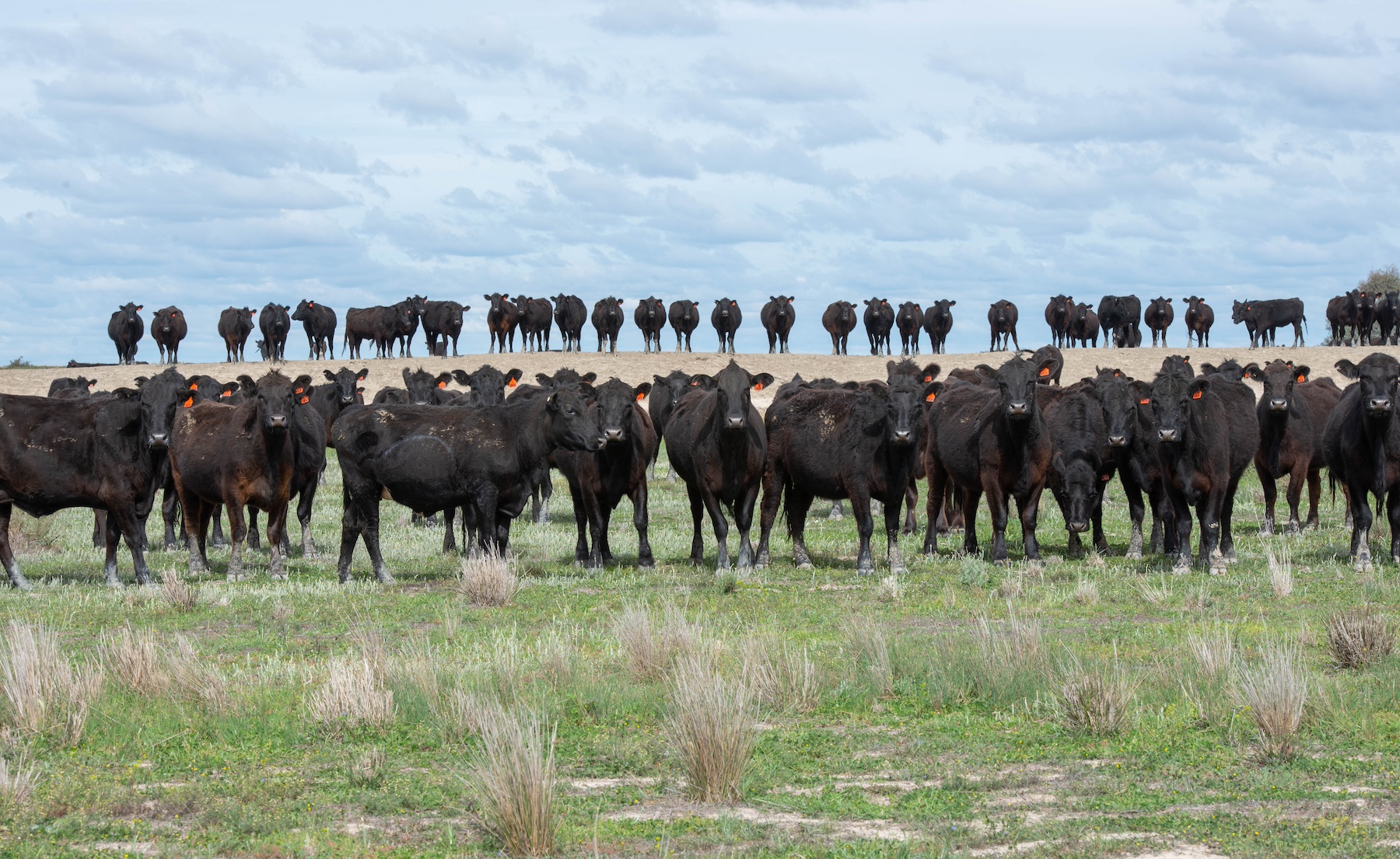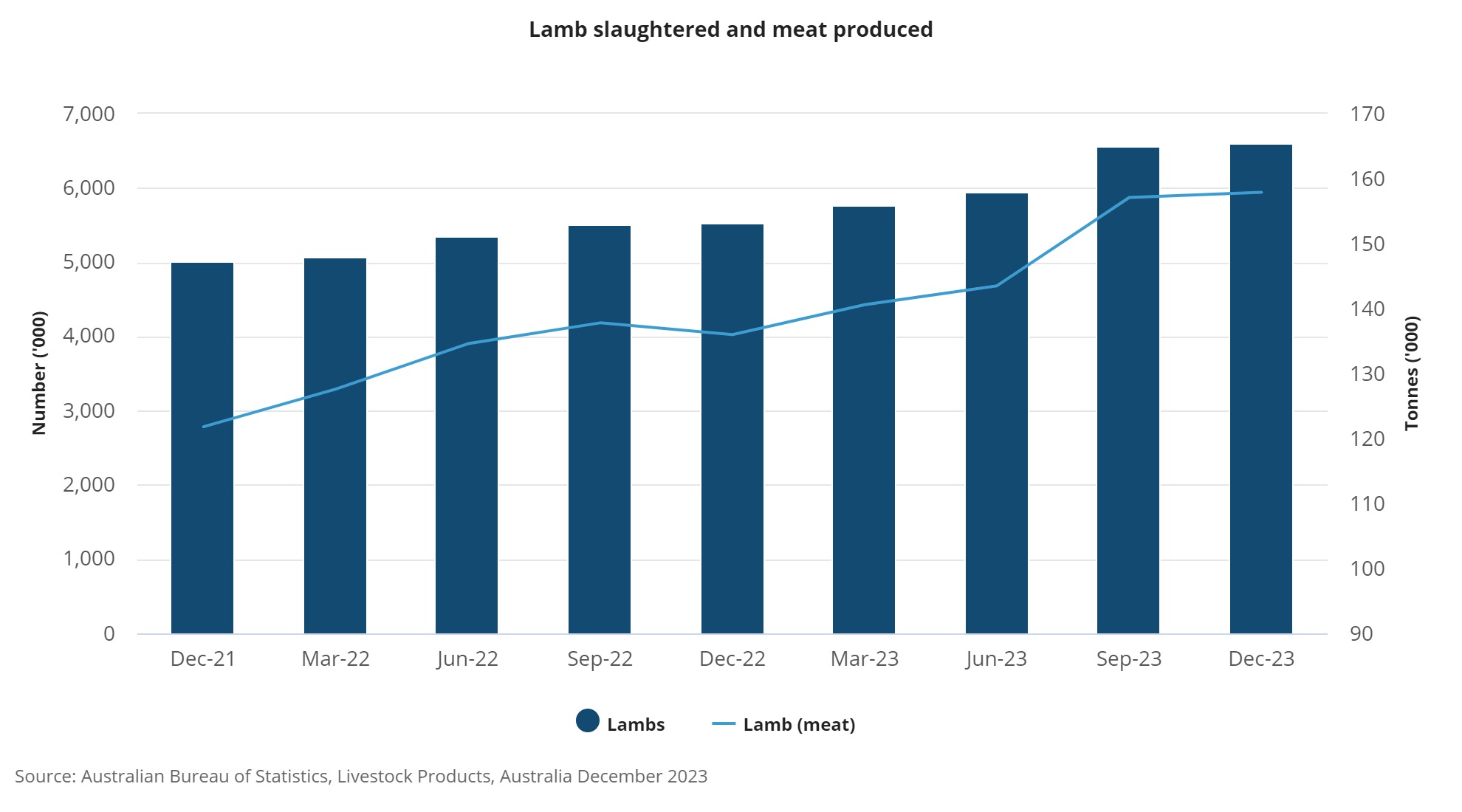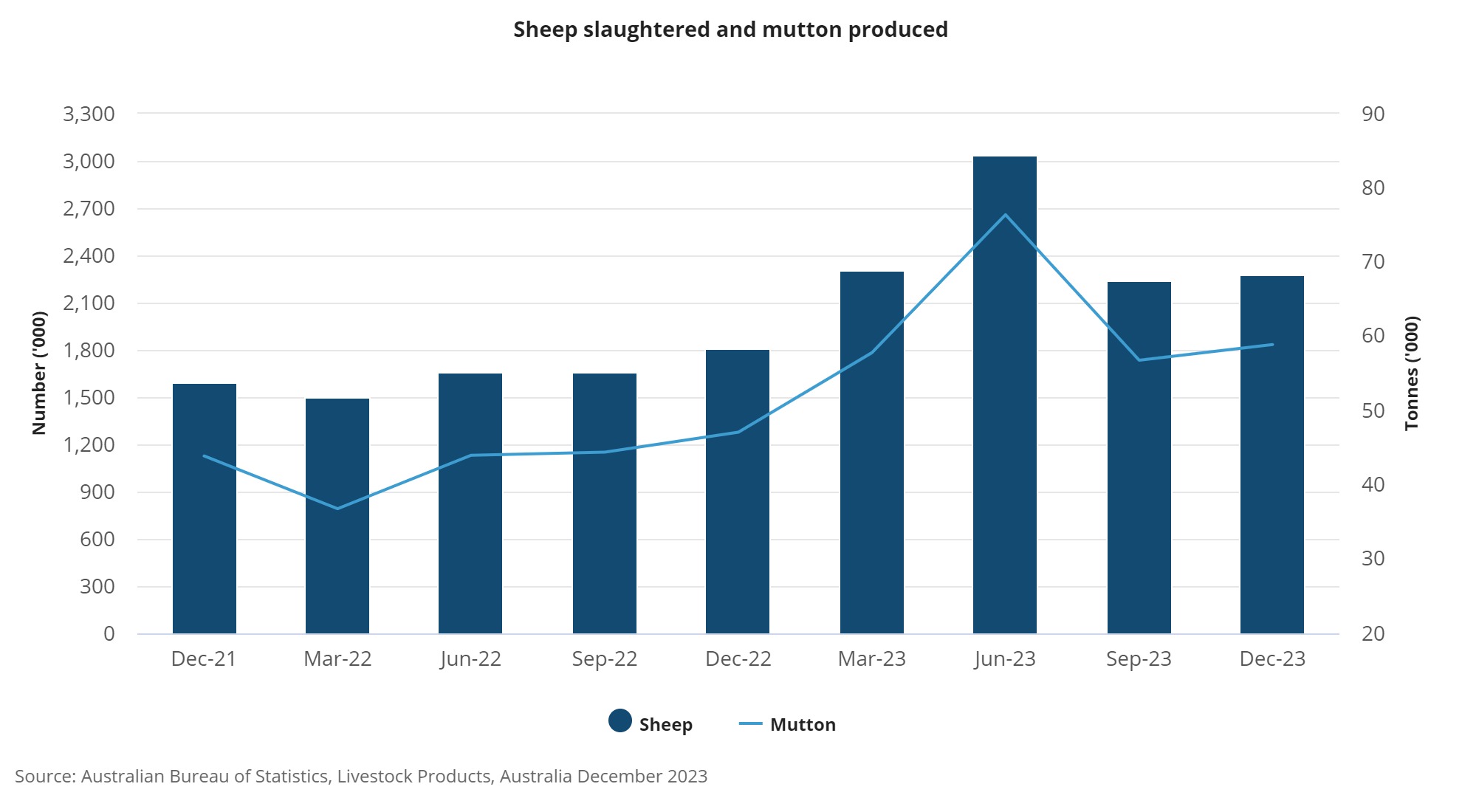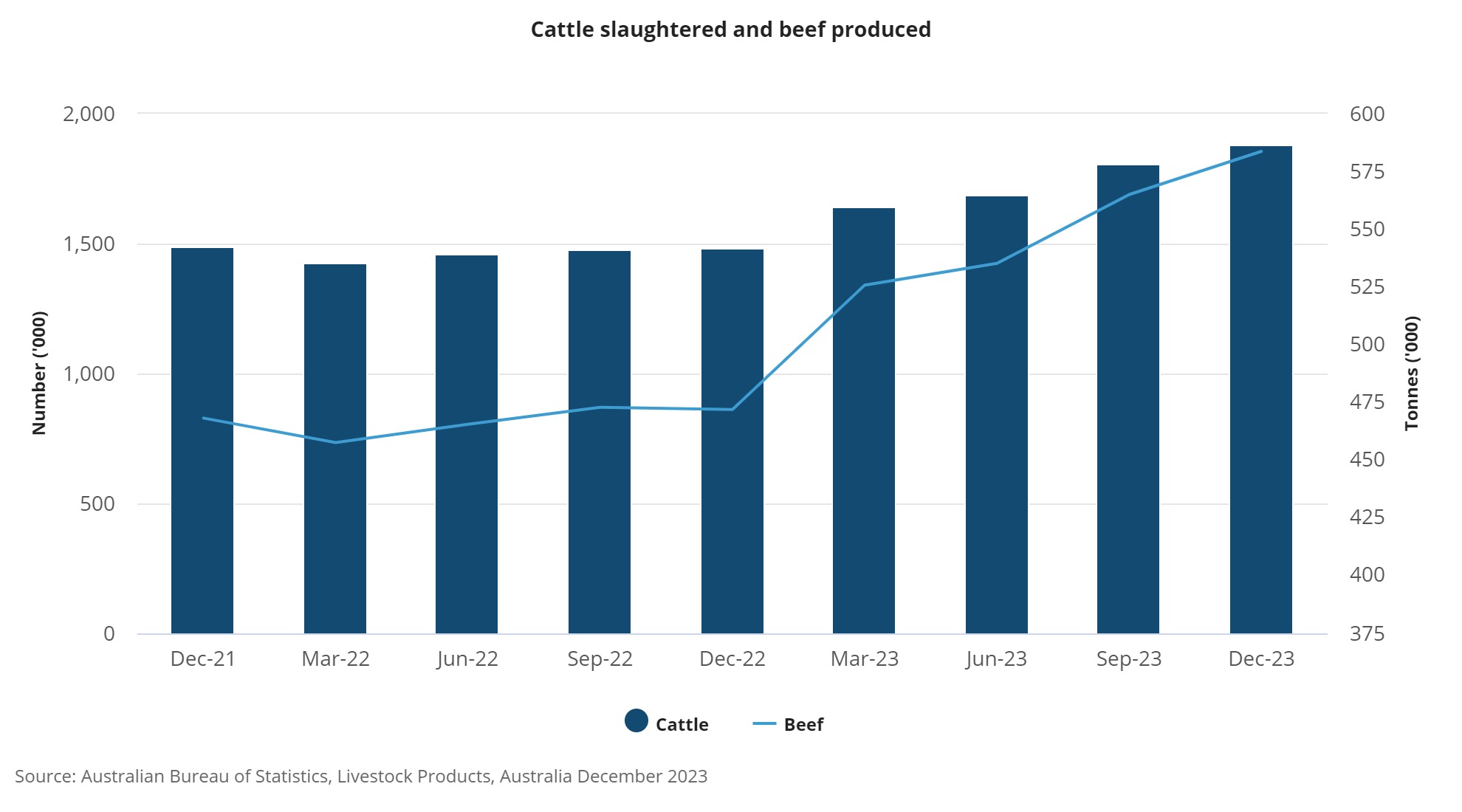The Australian Beef Market in 2025: An Absolute Cracker
In this column in July, the StoneX H2 2025 Australian Cattle & Beef Market Outlook’s bold calls were analysed and assessed for what the final 6...

Australia’s sheep and lamb production figures have reached new highs, as data released this week by the Australian Bureau of Statistics shows that slaughter of lambs also increased 16.38% year-on-year to almost 25 million lambs, delivering another record.
The ABS’ Quarterly statistics on livestock slaughtered and meat production revealed Australia produced the most lamb on record in the calendar year 2023.
In all, 599,461 tonnes of lamb were produced in 2023, putting it 11.6% higher than 2022, which was another record year.
Stephen Bignell, Manager - Market Information, at MLA, noted that as predicted last year, lamb production hit yet another record thanks to the significant flock rebuild since 2020.

“The biggest sheep flock for 15 years, including the greatest number of ewes and biggest number of lambs, has resulted in these record slaughter and production rates yet again this year,” Mr Bignell said.
“Despite anxieties into the capacity of processing facilities to cope with the backlog of lambs, these figures indicate that they were able to cope with the numbers supplied.
“This resulted in strong exports as well as plenty of lamb being available domestically, which was enjoyed by many Australians over the summer.
“Lamb carcase weights were down 3.64% to 24.09kg. This is close to the ideal carcase weight for Australian domestically-consumed lamb – which is around 24kg.”
The fourth quarter of 2023 was the largest quarterly lamb slaughter on record at 6,674,500 lambs, which helped to break the yearly record.

It was also a record year for sheep and mutton production, with a 43% increase in mutton production to 246,003 tonnes. This is the largest calendar year of mutton production since 2006.

Last year was also a large production year for beef, with production up 18% year-on-year to 2,210,954 tonnes, which was the largest year since 2019.
“This was thanks to a large national herd and processors handling the increase,” Mr Bignell said.
“Cattle slaughter last year reached 7,028,900 head, up 20% compared to 2022.
“The last quarter also showed a female slaughter ratio (FSR) of 46.87%, bringing the annual FSR average to 46.58%.
“A FSR rate of below 47% indicates that the Australian cattle herd is in a marginal growth phase following two consecutive destocking periods as shown in the middle of 2022.”
.jpg)
In this column in July, the StoneX H2 2025 Australian Cattle & Beef Market Outlook’s bold calls were analysed and assessed for what the final 6...
.png)
Each December we save the last article of the year for a bit of a crystal ball gaze, as we try to bring together market fundamentals and work out...
.png)
Australia’s wool market posted another strong performance this week, with all micron categories attracting solid support across the three selling...